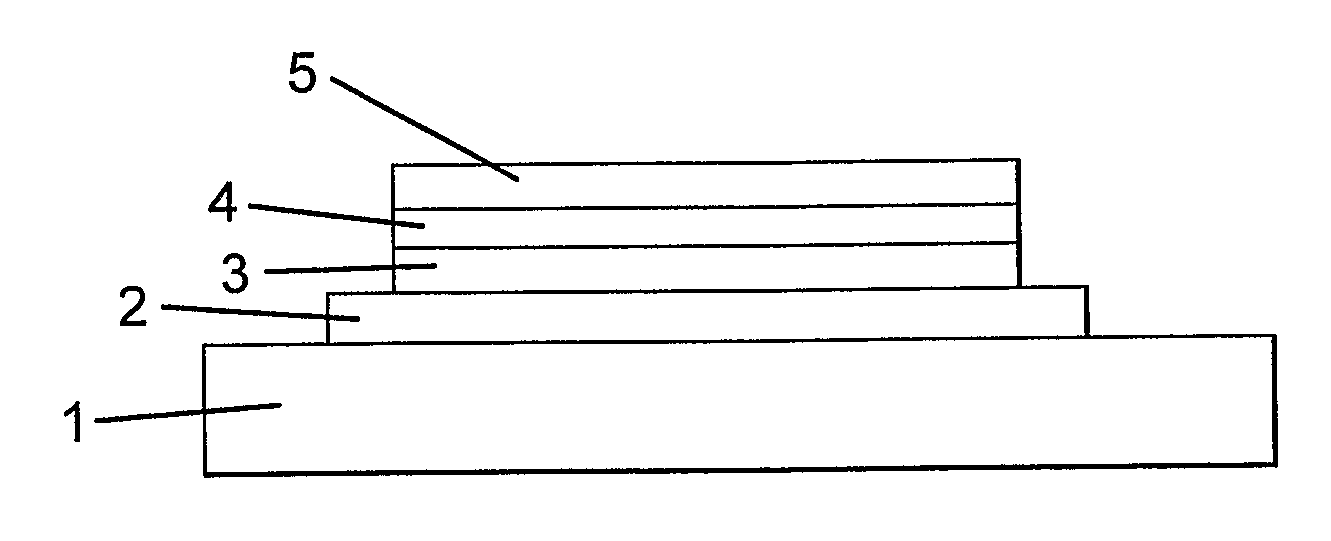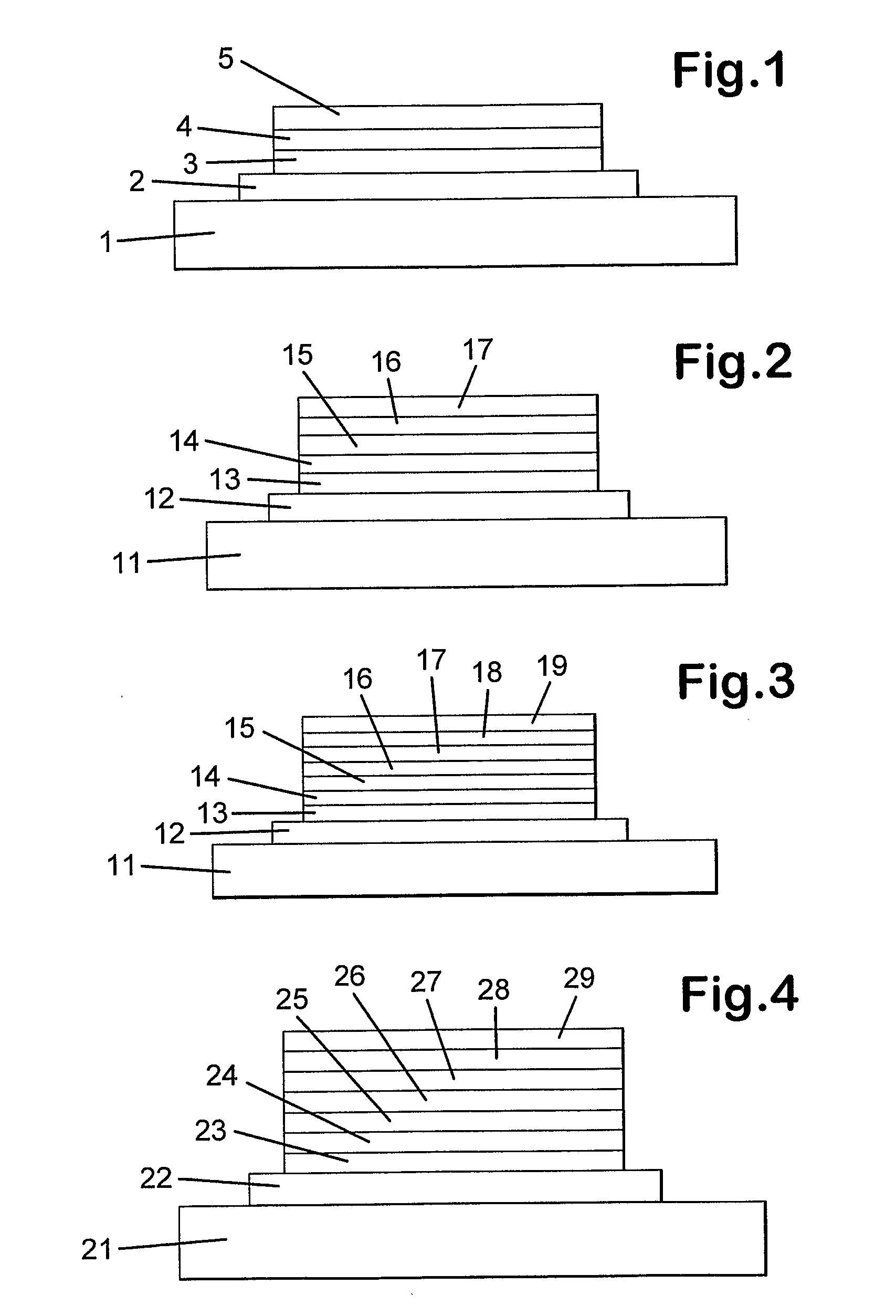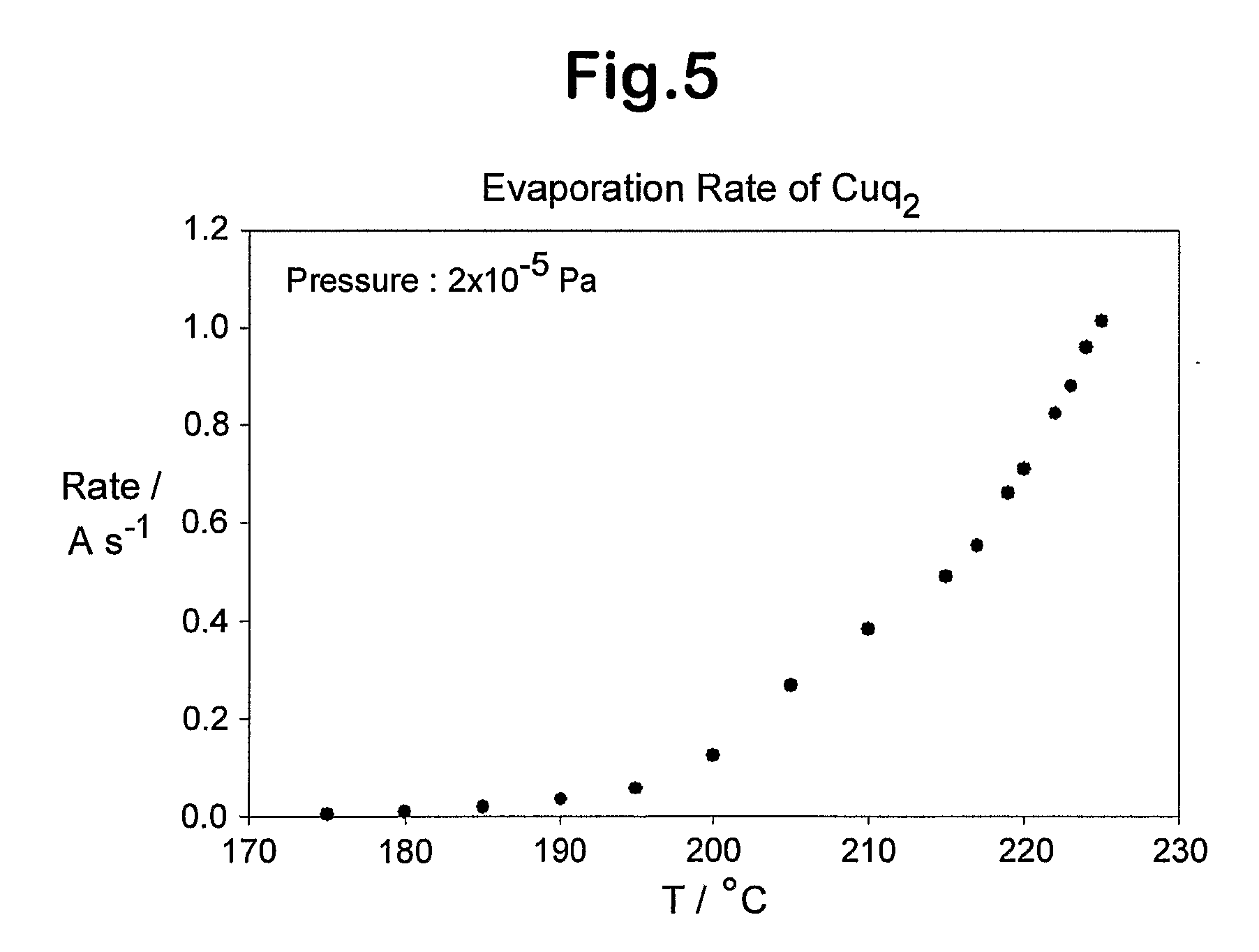Electroluminescent Devices
- Summary
- Abstract
- Description
- Claims
- Application Information
AI Technical Summary
Benefits of technology
Problems solved by technology
Method used
Image
Examples
example 4
PREPARATIVE EXAMPLE 4
Device Structure
[0126]A pre-etched ITO coated glass piece (10×10 cm2) was used. The device was fabricated by sequentially forming layers on the ITO, by vacuum evaporation using a Solciet Machine, ULVAC Ltd. Chigacki, Japan. The active area of each pixel was 3 mm by 3 mm. The coated electrodes were encapsulated in an inert atmosphere (nitrogen) with V-curable adhesive using a glass back plate. Electroluminescence studies were performed with the ITO electrode was always connected to the positive terminal. The current vs. voltage studies were carried out on a computer controlled Keithly 2400 source meter.
example 1
[0127]Devices were formed by the method described above consisting of:
ITO / ZnTP TP (20) / α-NBP(75) / AlQ3.DPQA (75:0.2) / ZrQ4 (20) / KL(x) / LiF(0.3) / Al
ITO / ZnTP TP (20) / KL(x) / α-NBP(75) / AlQ3.DPQA (75:0.2) / ZrQ4(20) / LiF(0.3) / Al
[0128]wherein ZnTP TP represents zinc phthalocyanine of formula indicated below, α-NBP has the structure indicated below, and KL(X) indicates CuQ2 in the thickness in nm indicated. The performance of the devices was measured and the results are as shown in FIGS. 5-21. A spectrum of a similar cell without CuQ2 is shown at FIG. 22. Note in relation to the thicknesses of the LiF that the quoted value is sometimes 0.3 nm and sometimes 0.5 nm, no significance flowing from that difference which is within experimental error.
example 2
[0129]Devices were formed by the method described above consisting of:
ITO / ZnTP TP (20) / α-NBP(75) / AlQ3.DPQA (75:0.2) / Zrq4 (20) / KL(x) / LiF(0.3) / Al
[0130]in which in this instance KL(x) represents VOq2. The performance of the devices was measured and the results are as shown in FIGS. 23-24.
PUM
 Login to View More
Login to View More Abstract
Description
Claims
Application Information
 Login to View More
Login to View More - R&D
- Intellectual Property
- Life Sciences
- Materials
- Tech Scout
- Unparalleled Data Quality
- Higher Quality Content
- 60% Fewer Hallucinations
Browse by: Latest US Patents, China's latest patents, Technical Efficacy Thesaurus, Application Domain, Technology Topic, Popular Technical Reports.
© 2025 PatSnap. All rights reserved.Legal|Privacy policy|Modern Slavery Act Transparency Statement|Sitemap|About US| Contact US: help@patsnap.com



